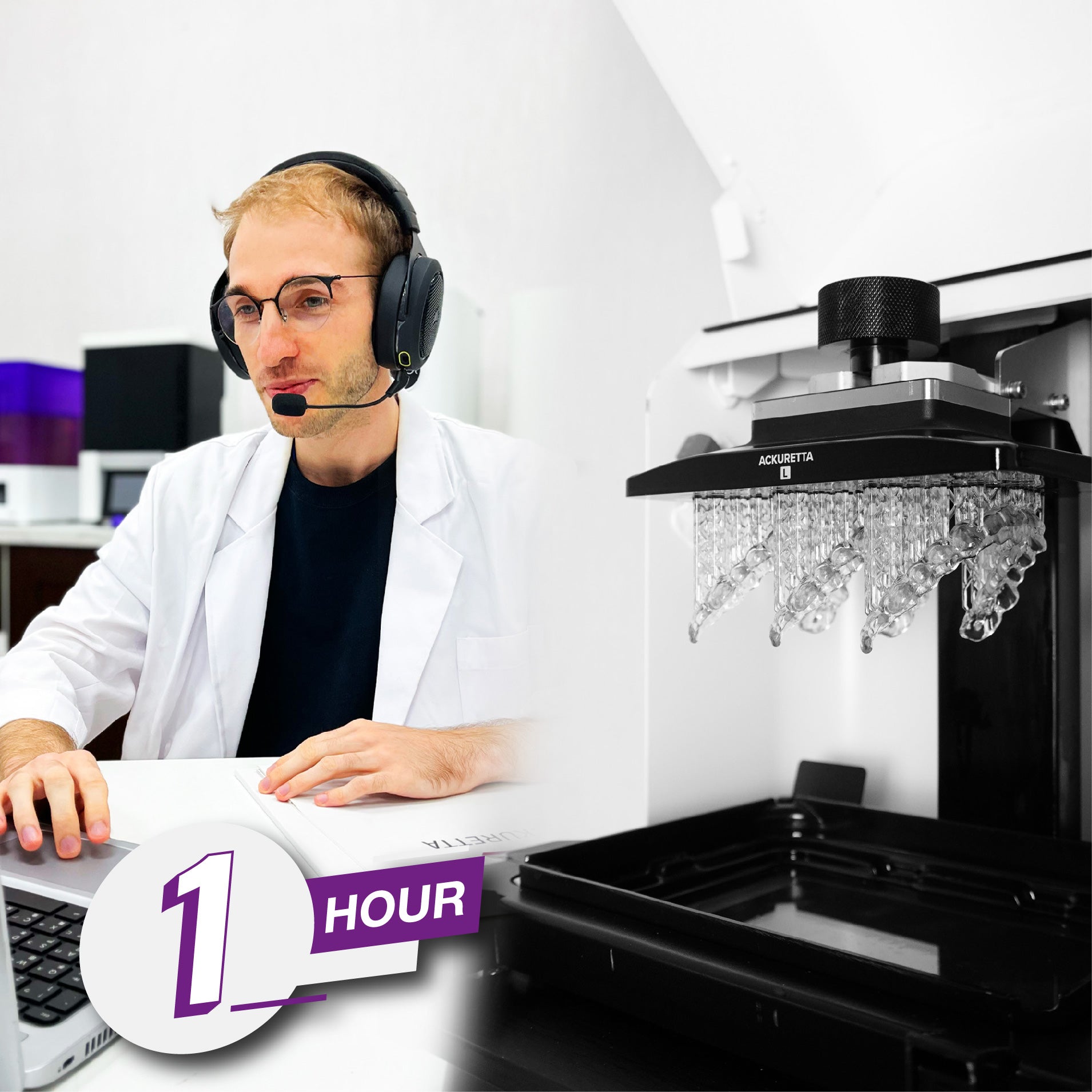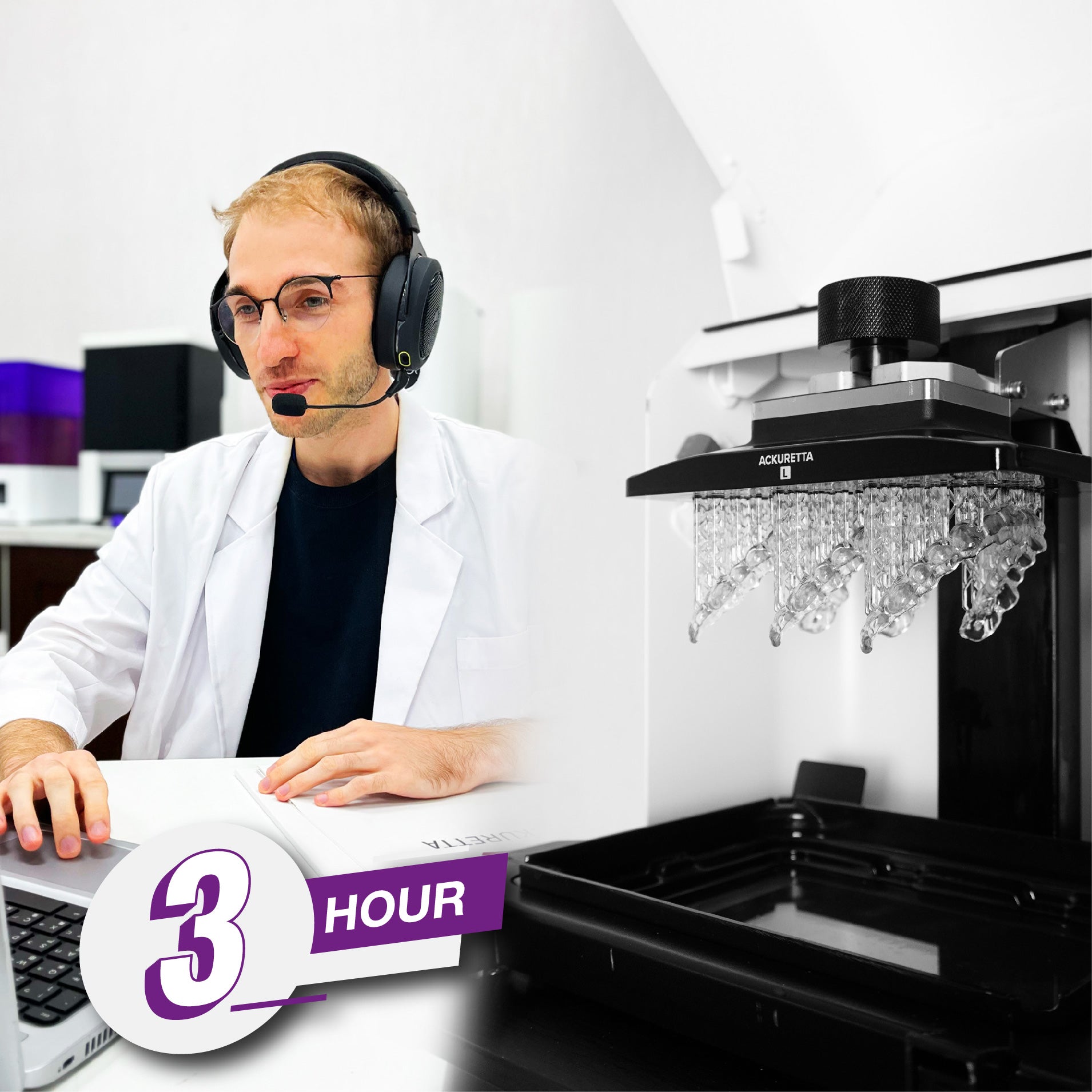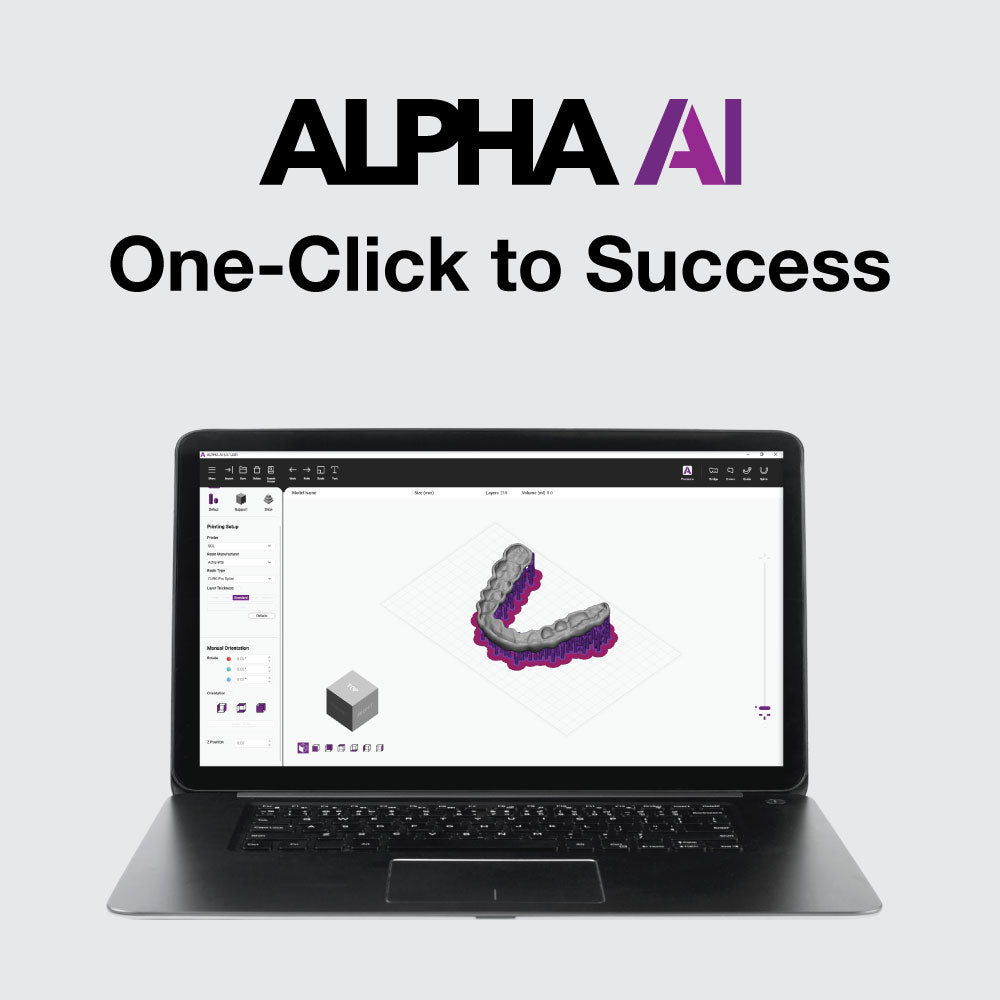In a typical dental environment, most users do not have the time to develop the technical knowledge and an acute understanding of how to operate 3D printers and handle the related materials. Therefore, having subsystems within the printer, software, and post processing reduces the amount of guesswork and limits the margin for user error.
Some of the typical operations that can be done by auto calibration are:
1. Automatic Z axis calibration
This relieves the user from trying to level the build platform and vat; this manual operation demands careful attention because any error can easily lead to misprints.
2. Clean Vat
Most inexpensive machines require the user to clean the vat manually and sift through the resin mix to remove any debris. This can be a rather bothersome process and may lead to further contamination and a loss of resin when it is drained from and then added back to the vat.
A built-in clean vat function is a simple one-touch solution to cure a thin layer of resin that can be quickly and easily removed with a piece of stiff paper or business card, saving the operator 15 minutes or more of their workday.
3. Pre-calibrated resins
Without having a pre-calibrated resin system on the dental 3D printer, most users would be left with the arduous task of calibrating resins by themselves and using questionable knowledge sourced from online forums and limited tools. This all usually leads to suboptimal calibration of materials for both curing time and shrinkage. In a world where time is one of the most-valued resources, we estimate that it takes one person anywhere between 16 and 24 man-hours to calibrate just one resin. This adds up quickly when you consider the number of resins you use to produce multiple applications.
Using a pre-calibrated resin system ensures optimal printing performance with plug-and-play performance. Most users are choosing to buy 3D printers that relieve them from doing manual production tasks.
Is it worth your time?
As a dental professional you probably have limited time and the time you do have, you probably prefer not spending with machines. Auto-calibrated equipment is made to make your workflow more efficient & simpler. This starts with your slicing software - there is software designed for dental professionals including pre-set parameters for most dental applications.
Dental 3D printers are manufactured in a way that the printing process requires as little manual input as possible - making 3D printing accessible to ALL dental professionals and not just tech-savvy ones. Auto-calibration is a key component in that design.
Thus, buy a specialized 3D printer and save yourself many headaches in the future.























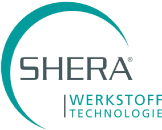








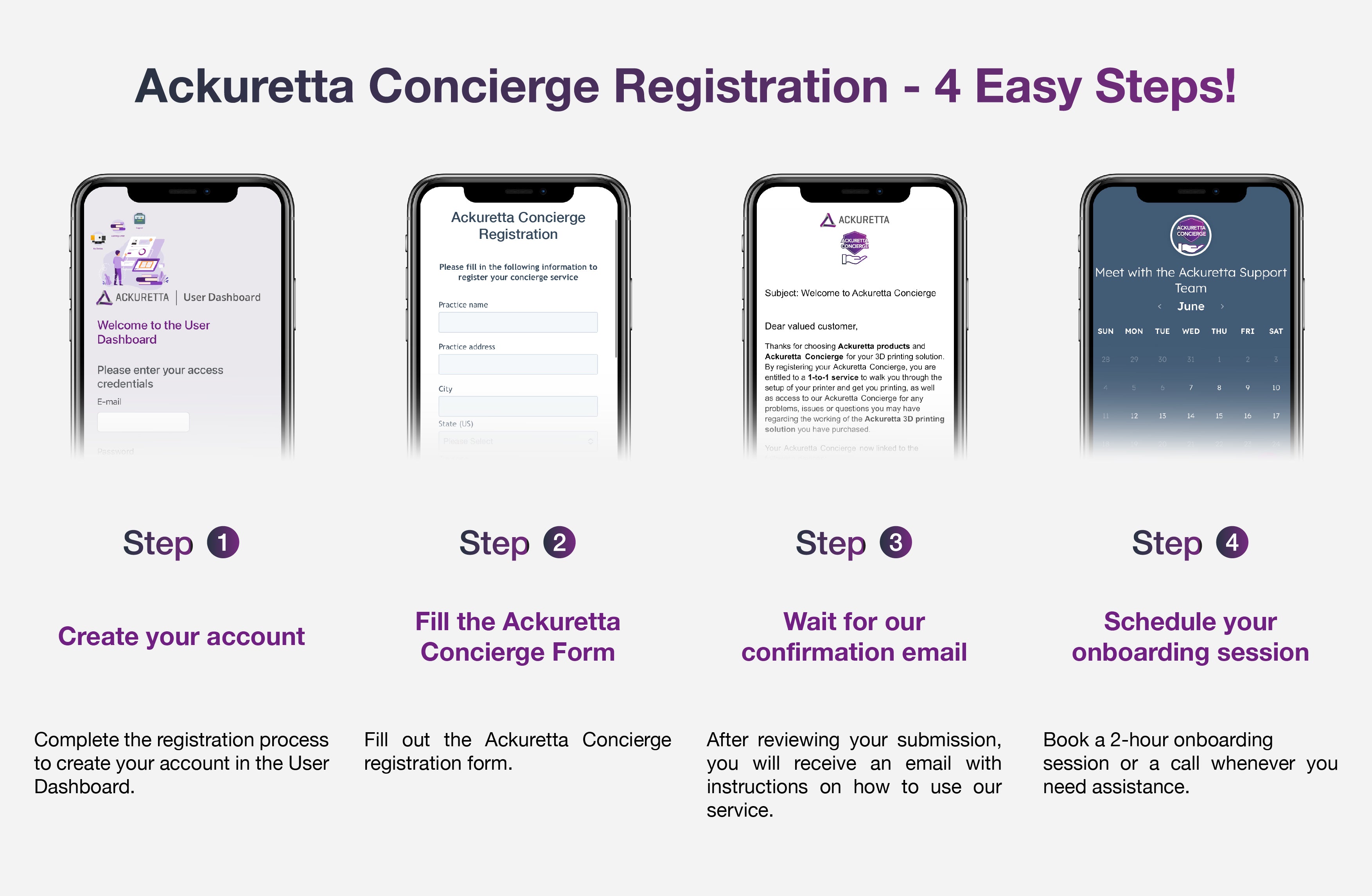






























 Loading ...
Loading ...


